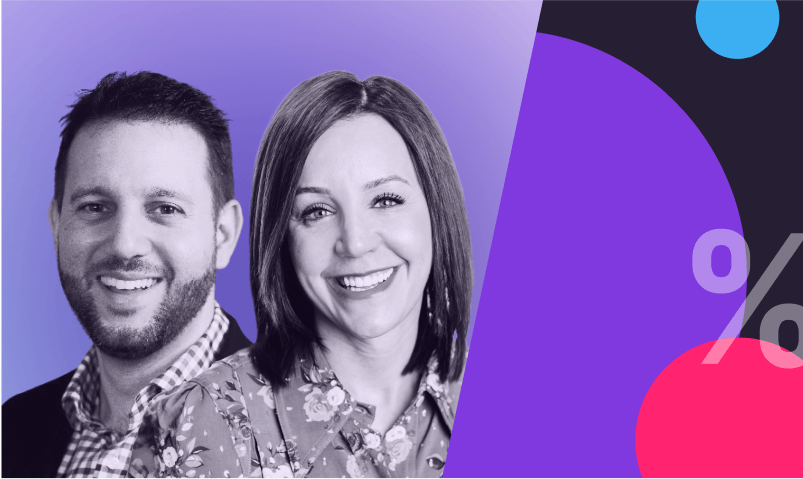Part 1 of mastering sales efficiency: An innovative approach
Stay up-to-date with data-backed insights
Thank you for your submission.

All of us have soft spots in our sales funnel. Creating a process that identifies elements that kill our win rates and solves for them systematically is absolutely critical.
The right selling behaviors at the right times mean higher win rates, larger deals, faster sales cycles, and lower churn. We all know this. We also know that markets, competitors, and products are ever-changing, so it is easy to have the right approach from yesterday expire today. It puts a huge demand on us as revenue leaders to continuously adapt our selling approach.
Why then, do so few leaders have a methodical way to identify and solve for the weakest parts of their sales process — those embedded behaviors that are detrimental to results?
After working with thousands of CROs and Head of Ops over the years, I’ve created a proven methodology for continually sharpening your sales approach — no soft spots allowed.
You have weak spots in your process: Find out where
Start by pulling data from your CRM to learn exactly where your funnel is most blocked. Find the stages that convert to the next stage at a relatively low rate, which are usually obvious with the right report. Here’s what it looks like:
It’s clear in this example that the discovery stage is crippling the win rate and needs to be optimized. If your discovery is only converting at 24%, you’re losing 76% of prospects at this stage. That’s untenable.
Determine the root cause of the weak spot
Now for the innovative stuff! It’s time to uncover the “why.” Your first move is determining which behaviors in the target stage (discovery here, for example) correlate with closed-won and closed-lost deals. These behaviors are the key to understanding how to improve your conversion rates in discovery. Without a data-driven approach to the “why,” you can’t confidently set your sights on a solution.
Pull a report on how the key behaviors that should happen at some point in the sales process are showing up in this particular stage. And, how each of those behaviors aligns with won and lost outcomes. It sounds more complex than it is. Have a look at this chart:
The behaviors that you are looking for need to be customized for your organization; these are illustrative only. Be sure to include the behaviors and talk tracks you’d expect to happen in the overall sales process, not just this stage. You must find where the sellers are doing the right behaviors at the wrong times, which is usually highly detrimental.
For example, “Duration” refers to the average length of a discovery call. “Implementation” refers to the Gong seller discussing how we implement our products. It’s likely a great topic to discuss, but not the right timing in the sales process. “Presentation” is how much the Gong rep is presenting in the discovery call, and so on.
This data is pure gold, revealing where there are significant differences in behavior happening in successful vs. unsuccessful deals.
Then, do two things:
- Prioritize the data. Focus on the behaviors with the most significant gaps. In the example above, there is not much difference in the duration of the calls, but there are massive differences in the topic of “Deal Execution.” This topic is being discussed far more at this stage in lost deals and is very likely a common, detrimental behavior. Discussing our “Strategic Narrative” and leaving plenty of time to lock down “Next Steps” both stand out as potentially winning behaviors. Important call out: Removing friction from the weakest stage in your sales process (in this case, discovery) requires that you increase the use of behaviors that have a positive influence on outcomes and decrease those that have a negative influence on outcomes. Best practice is to address both.
- Talk with trusted leaders. Now that you have the top one or two beneficial behaviors and one or two detrimental behaviors, use this data to spark conversations with trusted leaders and sellers in your organization.Tap into your most insightful team members. After anchoring the discussion in facts, ask them questions like these: “Why might this behavior be happening?” “Does this behavior seem like the right one to address?” “What do we need to change in order to achieve more of these winning behaviors?”
Use data first to tentatively prioritize the behaviors you want to address, but hold them loosely. Follow up the data pull with layering in trusted opinions that can add richness to your understanding of the challenge. With both sets of inputs, quantitative and qualitative, make a final decision on which behaviors you’ll address across your team.
Now you’re ready to implement a solution.
Next up, I’ll show you how to tackle solutions
I’ll cover the best way to tackle your weak spots in my next post, about replicating the right behaviors and deprecating the wrong ones. I’ll share the best ways to track and transform your sales org broadly and improve results for individual reps.
To make sure you get prompted when this drops, sign up for more Gong content to your right.



